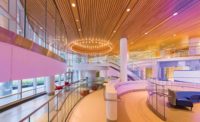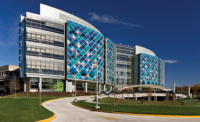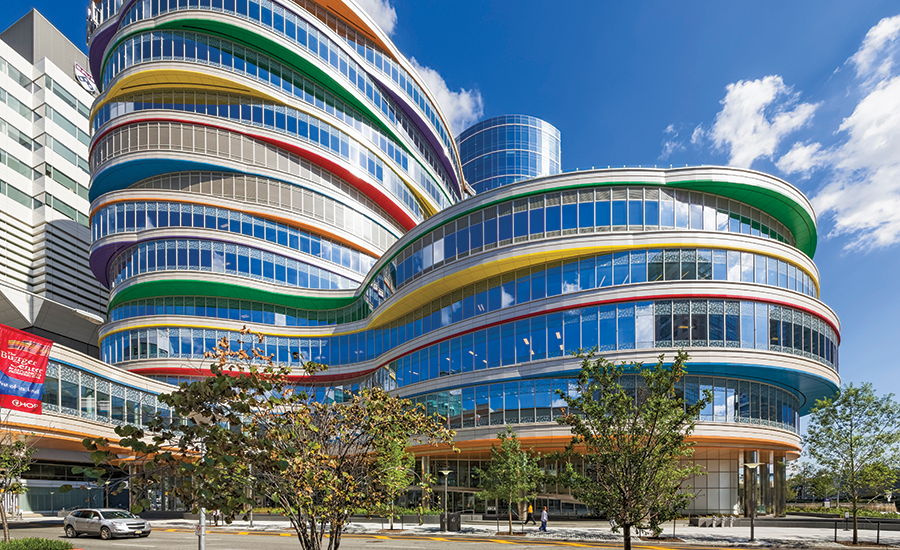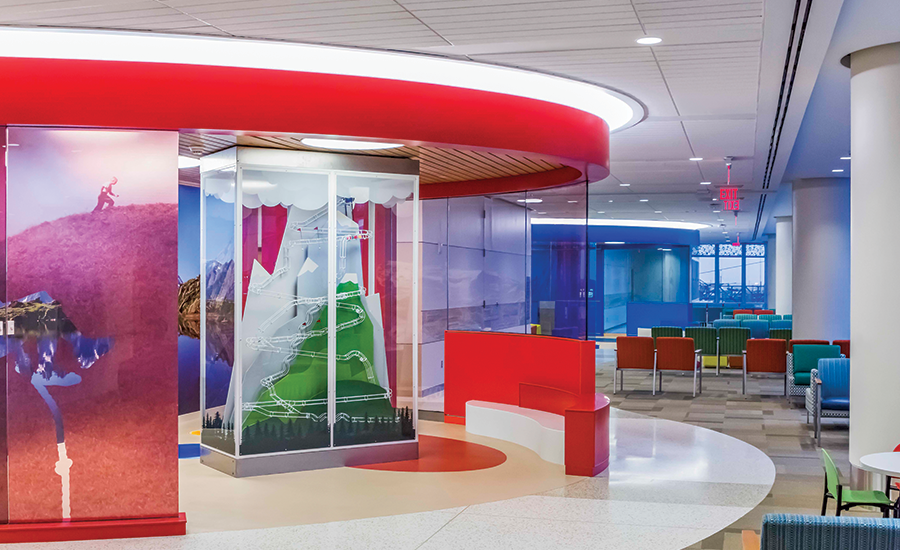Health Care Best Project - The Children's Hospital of Philadelphia Buerger Center for Advanced Pediatric Care

IMAGE BY JEFF GOLDBERG/ESTO, COURTESY OF TURNER CONSTRUCTION CO.

IMAGE BY JEFF GOLDBERG/ESTO, COURTESY OF TURNER CONSTRUCTION CO.

IMAGE BY JEFF GOLDBERG/ESTO, COURTESY OF TURNER CONSTRUCTION CO.



The Children’s Hospital of Philadelphia Buerger Center for Advanced Pediatric Care
Philadelphia
Best Project
Owner The Children’s Hospital of Philadelphia
Lead Design Firm FKP Architects
General Contractor Turner Construction Co.
Civil Engineer Pennoni
Structural Engineer LeMessurier Consultants Inc.
MEP Engineer Bard, Rao + Athanas
Architectural Pelli Clarke Pelli Architects
Landscape Architectural Nelson Byrd Woltz
Landscaping Sean’s Landscaping
Curtain Wall Subcontractor Enclos Corp.
The largest construction undertaking in the hospital’s 160-year history, the project aims to make the medical experience as stress free as possible for children.
The approximately 700,000-sq-ft facility features a light-filled, easy-to-navigate interior. “Clinical neighborhoods” group medical subspecialists together so families can easily get access to multiple services on each floor. Interactive play installations provide distractions for young patients and the three-acre landscaped plaza features a discovery garden. A two-story undulating ramp twists upward through the lobby and the city’s largest green roof. Four fountains top a five-story, 753,000-sq-ft underground parking garage.
Efficiently designed registration and checkout areas reduce wait times and allow the facility to accommodate more than 200,000 outpatient appointments annually.
Designed to “embrace the playfulness and continual motion of all children,” the “children in motion” concept is reflected in the interior public and landscaped spaces. The building’s facade embodies this spirit, the awards submission says. Installing the colorful, 12-story curving curtain wall proved to be one of the project’s biggest challenges. The curtain wall was redesigned early in the project because the original design required as many as six subcontractors. The project team reconfigured the complex wall system to include a unitized curtain wall system that streamlined the installation.
Another project highlight is the ramp that is accessible to all children, providing them with “opportunities to play, contemplate and enjoy,” the submission says. The ramp was digitally modeled in conjunction with the curtain wall.
After the concrete ramp slab was poured and cured, a 3D laser scan of the ramp structure was performed and used to set final radius and dimensional parameters for the glass handrail shoe and panels. After the handrail shoe installation, an additional 3D laser scan was performed to help install the ramp’s metal panel cladding. “Because the warped face of the metal panel was designed to align exactly with the vertical face of the handrail shoe, there was no margin for error,” the submission states. “The panels were fabricated from the 3D scan data by a vendor in Ohio and, when delivered to the site, fit precisely as designed without any required field correction or costly refabrication.”
The level of detail is evident throughout the building. One Best Projects judge noted that “the design is a beautiful architectural marvel that really embraces the function of a children’s hospital.”
The project team also engaged workers’ families through an art contest for the subcontractors’ children. The children submitted safety-themed illustrations, collages and diagrams. After the illustrations were posted around the jobsite, prizes were awarded to the most popular submissions. Every child who entered the contest also received a framed certificate. The contest was so popular that a second contest was held later in the project.







